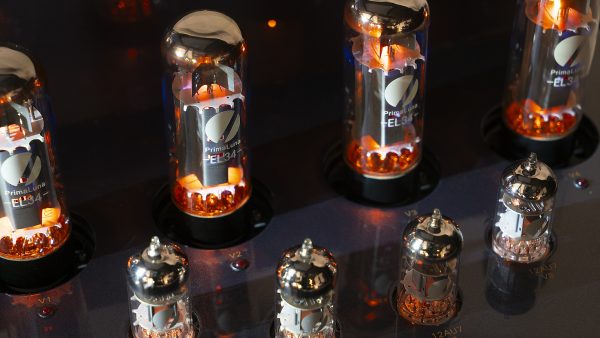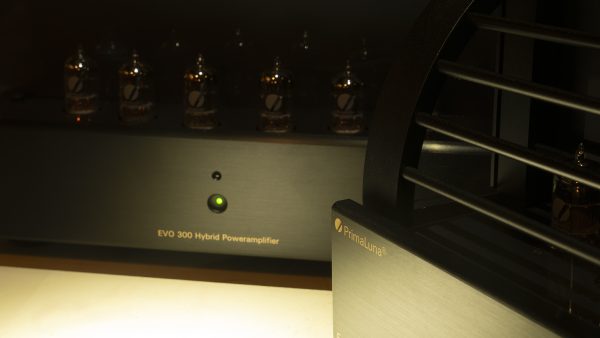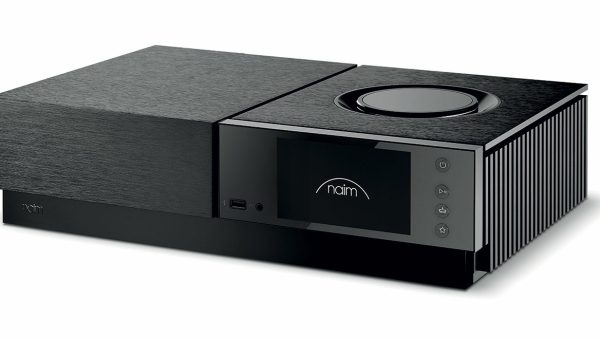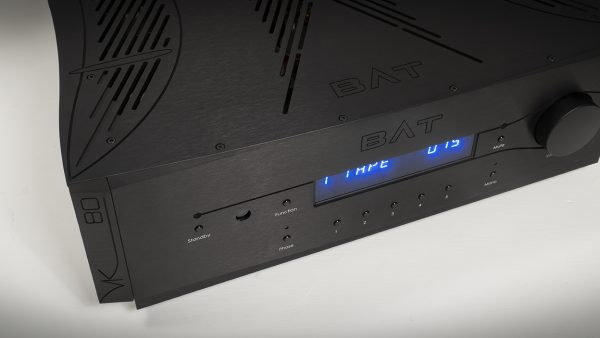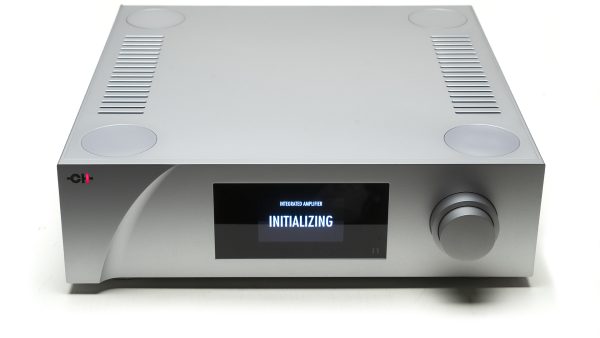Listening to the Java LDR Double Shot preamplifier through a known reference system comprised of the PrimaLuna EVO 400 power amplifier with KT150 tubes, a pair of Magnepan 2.7X speakers (with a six-pack of REL S/510 subwoofers), and the dCS Vivaldi One disc player, this reasonably priced pre delivers the goods.
It would be honest to say that between the examples of class D amplification we’ve heard from Mola Mola, Bel Canto, and Java, we’ve changed our collective minds about what can be accomplished with this topology. Having had excellent results with Martin Bell’s integrated amplifier last year and double-shot power amplifier this year, giving his LDR preamplifier a go is the next logical step in this very stylish brand.
As you can see, the shape is slightly unconventional, with the cases CNC machined to achieve the results. A range of ten different finish combinations also makes the Java gear very environmentally friendly—downright attractive, we’d say. Designer Martin Bell says, “We could put it in a simple, folded steel box, but what fun would that be? And, the folded steel box wouldn’t sound as good.”
What’s in the name?
Java gives its entry-level components the “single shot” moniker, and its top models are called “double shot.” I appreciate a man who loves a good cup of coffee. The main difference between the single and double-shot preamplifier models is the way they connect to the rest of your system. The single-shot LDR preamplifier has all RCA connections, while the double shot is all XLR. There is no phono stage, nor is there an option to add one. On many levels, that’s probably the best way to future proof a preamplifier. You may not need or want to pay for a DAC or phono stage so that this component can stay in place for a long time.
The LDR signifies how Java utilizes a light-dependent resistor to control the volume level. Instead of using a standard passive attenuator, the LDR resistor used for level control in the Java changes value according to how much light strikes it. So, the volume control on the front controls the brightness of an LED that shines on the LDR. This reduces the distortion from a passive or digital attenuator and mechanical degradation over time, all resulting in cleaner sound and less chance for long-term electronic failure. These are all great ideas.
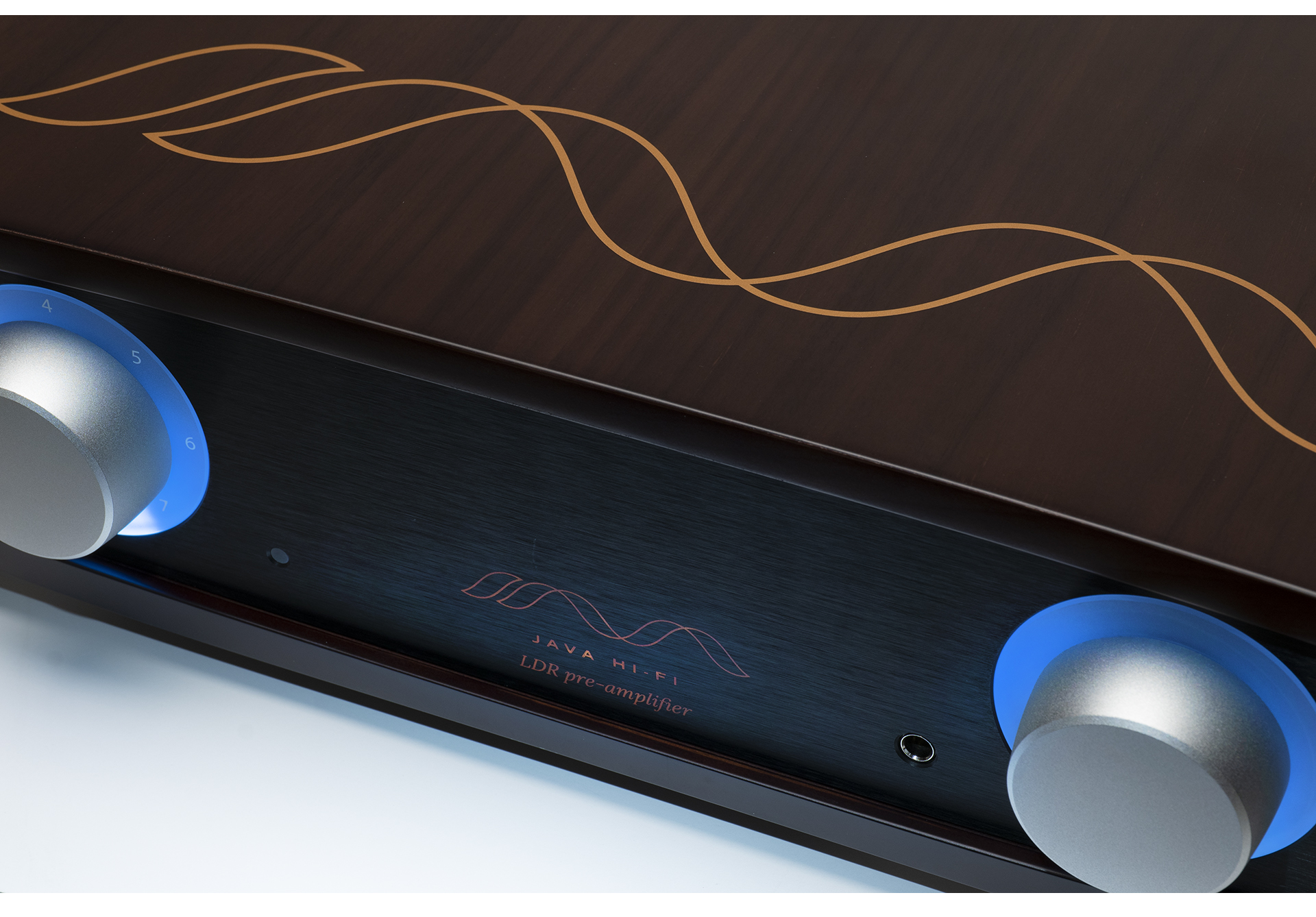
When asked about the LDR concept, Bell tells me that his experience with the LDR setup on some of the DIY forums took him on a five-year journey to refine the concept to where it has excellent measure performance and undeniable sonic magic. An all-discrete signal path adds to that “sonic magic” that the LDR Double Shot brings. Only a microcontroller is used for volume control and input selection.
Setup and use
A line-level preamplifier is easy to set up, especially a solid-state unit like this. Once you unbox the Java, it doesn’t take long to get moving. You’ll notice the high-quality XLR connectors and clean layout around the back. Java includes a basic and highly functional remote, but the best part of the Double Shot LDR is watching it power up, and the backlit volume and input selectors come to life.
Not only is this an excellent preamplifier from a sonic standpoint, but it’s also beautiful and fun to use. The hi-fi world needs a bit more of that! You can go to their online configurator and choose between a number of case and front panel colors to help it blend into your décor. With an Eames Lounge and Noguchi table in my living room, the supplied models work together perfectly. I must admit to being a big fan of all-white, too. It’s nice to have a range of options.
Java claims their preamplifiers come with 75 hours of burn-in time, and I did not notice the sonic character change after the first few hours of play and stabilization. The power draw is very low, so it has been on 24/7.
The Double Shot LDR uses an inverted circuit board to minimize vibration, which works well. A few different vibration reduction platforms were tried to no effect, so it will work well with whatever setup you have at your disposal.
Personal listening
The Double Shot LDR also has an on-board headphone amplifier, that should more than do justice to most phones. It turned in a great performance with my Meze Elite, and Focal Utopia reference phones, but if you’re at that level of head-fi, you may want an outboard unit. Using a few phones’ in the $600 – $1,000 range from Meze, Audeze, Focal, and Sennheiser left me feeling if I parked my hat here, the onboard capabilities are just fine.
Bass is well controlled, a fairly large sonic landscape is painted between your two ears, and highs are nice and smooth. For occasional to moderate headphone use, this is another value add for the Java.
Extra credit
When used with the Java Double Shot power amplifier, there is an obvious synergy, as you would expect. However, the two together, thanks to separate chassis and separate power supplies, are more dynamic than the integrated. This also gives you the option of using the Single Shot amplifier if you don’t need quite as much power or something entirely different, like a tube power amplifier.
I tried the LDR with several different amplifiers from Audio Research, BAT, Pass, and PrimaLuna—all with excellent results. The LDR is neutral as they come, so it allowed the sonic signatures of all these great power amplifiers to reveal themselves.
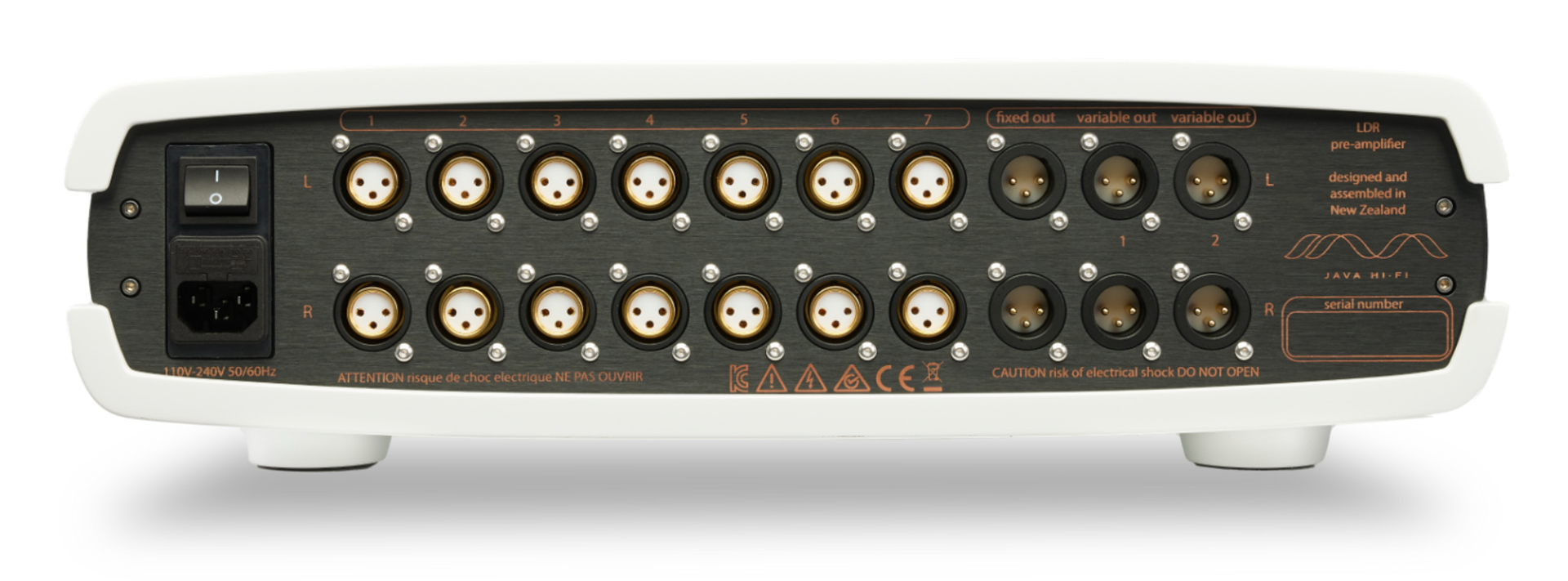
With seven balanced inputs, it can be used with a full range of sources, and with two pairs of variable outputs, you can bi-amp or use your favorite powered sub. I’m guessing it’s a tip of the hat for those of us with tape decks with a single, fixed output as well. Nice touch.
Six grand is an excellent value and a very interesting price point. There are a lot of preamplifiers a bit more expensive and some down in the 2-3k range. This one sounds and offers the functionality you’d expect in something nearer to 10k.
The sound
The LDR doesn’t have much of a sound (in terms of a sonic signature,) and on one level, that’s the best thing that can be said for a line stage preamplifier. The tonality is right in the center of natural/neutral. If I didn’t know better, I’d swear I was listening to a Boulder product costing much more. It’s also worth noting that this preamplifier is incredibly quiet.
Everything is as it should be, and overall, it is super quiet. Even when using the LDR in a chain with high-sensitivity speakers, there is nothing but blackness! Which is what you want. Playing a wide range of musical material, the LDR does not embellish or detract. Anywhere.
Considering this level of performance and execution, we are happy to give the Java LDR Double Shot Preamplifier one of our Exceptional Value Awards. We highly recommend it with the same enthusiasm we’ve had for the other Java products we’ve tried.
$5,995 (finish dependent)


